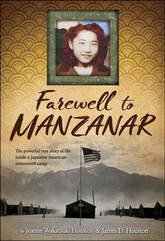
Have you ever heard of the Chicano Blowouts? Or the Federal Theater Project? What about Sister Corita's artwork, or the NAMES project? In Rad American History A-Z, Kate Schatz and Miriam Klein Stahl explore the American history that you might not have learned in school. Some stories are from America's founding, while others focus on recent events, but all celebrate the power of unified people, working together to change their world for the better.
I loved Rad Girls Can, so I was excited to learn that Rad American History A-Z had come out, and it completely lived up my high expectations! The striking illustrations and appealing formatting make it a fun, engaging read for younger readers, but I would highly recommend it to older readers as well--I had never heard of many of the featured people and events at all, and of those which I had, the book usually provided new facts or a fresh perspective. I really liked how instead of focusing on a particular person for each section, the book focuses on a broader subject (from #BlackLivesMatter to Hull House to Riot Grrrl), and then delves into the stories of a handful of related events, people, or topics, such as the Combahee River Collective and March for Our Lives. I also appreciated how the book highlights not just movements and events, but also things which have long been a part of democracy and resistance, such as libraries, quilts, and jazz. The writing is snappy, accessible, and informative, and the illustrations combine watercolor and cutouts with stunning results. An inspiring read celebrating the power of the people and the ever-present possibility of positive change, I would highly recommend Rad American History A-Z to readers ages eleven and up.

 RSS Feed
RSS Feed
